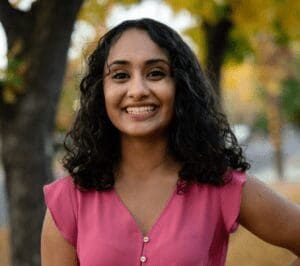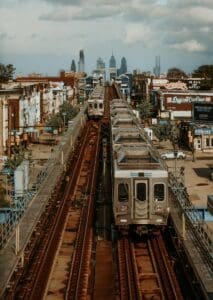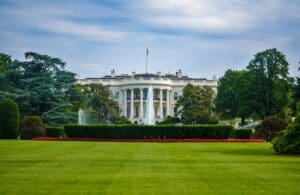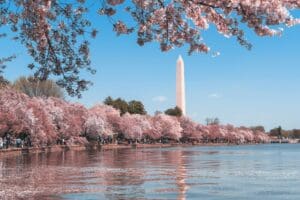As the feds rollback Covid-19 income supports, more municipalities are experimenting with guaranteed income programs. An interview with the woman leading the movement.
By: Michelle Liu
Just six years ago, the idea of a city unconditionally giving its people money, with no strings attached, was unthinkable. The concept might have been popular among some anti-poverty activists and Silicon Valley entrepreneurs who believed in some kind of supplemental income from the government, but hardly any leader made it a viable policy. Now, after the economic ravages of the coronavirus pandemic made once fringe ideas mainstream, the formerly out-of-reach proposal is being experimented with across the country.
In fact, there are dozens of pilot projects in American cities, with the officials responsible for implementing them trying to prove to federal policymakers that guaranteed income works.
It’s a story that goes back to 2016, when Michael Tubbs became the mayor of Stockton, California. He wanted to pioneer a policy in the city that, if successful, could provide a model for how to tackle poverty nationally. Inspired by Dr. Martin Luther King Jr.’s writings on guaranteed income, he launched the Stockton Economic Empower Demonstration (SEED) in 2017, the nation’s first mayor-led guaranteed income initiative. But he didn’t do it alone. His top policy aide Sukhi Samra was a driving force behind the program. She helped design Stockton’s pilot and oversaw its launch, later stepping in as the executive director of SEED to run the day-to-day operations.
Initially, the program gave $500 a month to 125 randomly selected residents of neighborhoods at or below Stockton’s median household income for two years. The disbursements, which began in February 2019 and ended in January 2021, were unconditional. SEED’s goal was to prove that “poverty results from a lack of cash, not character.”
The results were promising. A preliminary analysis of the program’s first year conducted by independent researchers found that the funds led to improved physical health, emotional well-being, and employment prospects among the recipients.
(This took place before the massive infusions of federal aid into the economy beginning in March 2020.) Remarkably, the proportion of those selected with full-time employment increased from 12 percent to 40 percent. Contrary to stereotypes that the money would be flitted away, the data showed that most of the $500 was spent on basic needs, including food, utilities, and transportation.
Even before those results came out and the program ended, the idea of a guaranteed income had been gaining steam nationwide. Andrew Yang made it a central feature of his 2020 presidential campaign, popularizing the concept. Then, the COVID-19 pandemic initiated a once-in-a-generation economic crisis and put millions out of work and the federal government sent people checks—with no strings attached.
At the same time, more cities warmed up to guaranteed income and looked to Stockton as an example, prompting Tubbs and Samra to launch Mayors for Guaranteed Income (MGI) in June 2020 to offer guidance for other interested jurisdictions. Since its launch, MGI has welcomed 50 mayors, as of this writing. Even though Tubbs lost his bid for reelection last year, the policy idea he championed has taken hold.
Over the last year, more than 20 U.S. cities have started guaranteed income programs, from Denver, Colorado to Gainesville, Florida to Cambridge, Massachusetts. To get a sense of where this movement is headed, I spoke with Samra, who directs MGI, about what she learned from all of the new pilots and what may come of guaranteed income now that the pandemic is coming to an end.
The following interview has been edited and condensed for clarity.
How has guaranteed income gone from an idealistic and fringe proposal to a policy solution being explored by major urban leaders nationwide?
When we first launched SEED, guaranteed income was like this crazy radical leftist idea that didn’t really have a lot of mainstream attention. The idea became more popular both because of the work that was happening in Stockton, and because of the Yang campaign. More and more cities were trying to understand how to do this for themselves. We were getting a lot of people reaching out to us, asking for technical assistance, asking how to replicate the work that we had done in Stockton. That number multiplied tenfold once the pandemic hit and officials wanted to get cash out really quickly to constituents who were in pain.
The Trump administration was not responding to Covid-19 and a lot of the stress and day-to-day interactions with constituents was falling on mayors. If you combine that with the racial protests of last summer in the wake of George Floyd’s murder, it really showed the way mayors are on the political frontlines on a range of issues, from economic security to police violence. For that reason, we launched Mayors for Guaranteed Income in June 2020 to really institutionalize the type of assistance that we were providing on a more informal basis—and also to show how mayors are supporting this idea from the ground up. Together, we’re testing the policy out in cities to prove that it can be scaled at a national level.
I often see universal basic income and guaranteed income used almost interchangeably. Is there a difference between the two?
They generally refer to the same thing: Direct cash payments that are going to individuals with no strings attached, no work requirements. Where they differ is that a universal basic income is, as the name suggests, universal. It’s meant to go to everyone. The most well-known example of this idea is Andrew Yang’s freedom dividend; it was $1,000 per month to everyone, no matter how much they made. A guaranteed income, on the other hand, is not going to everyone. It’s meant to go to people who are typically making less than a certain income level. That income level varies based on the proposal that you’re looking at, and how progressive you want to be. The reason that we use the term “guaranteed income” is that it’s more often touted as a solution for racial and gender inequity and as a tool for equities, because you’re targeting support to communities most in need.
Guaranteed income looks different in each city. For example, Oakland will focus on families of color while Stockton randomly selected its participants. How do mayors make these decisions? How do you advise them?
We work with each city to tailor its selection criteria so that it is responsive to each community’s needs. When we launched SEED back in 2017, we didn’t really feel like it was politically palatable to do a more targeted selection criteria, because we were the first in the nation. We had to make sure that people could see themselves as represented in Stockton’s sample. As the idea has gained more traction, cities have become interested in being able to target it toward specific families that we know were disproportionately impacted by COVID-19.
But we want to make sure that we’re not piloting for the sake of piloting. Rather, we are piloting so that we’re building toward federal policy.
And to have a sound policy, we want to make sure that we have sound research to follow it. This means looking at different populations, different amounts of guaranteed income, different durations, etc. Those are the types of variables that we encourage cities to think about when they come to MGI.
MGI has just a couple of requirements. The first is that across all cities, benefits are preserved and that cities are doing their best to maintain benefits. The second is that cash is truly unconditional: no strings attached, no work requirements. The rest is for each city to decide based on their constituents, what their mayor wants based on fundraising.
One of the most common questions about guaranteed income is the source of the money. Where do the funds come from for pilot programs and where should they come from if guaranteed income becomes a federal policy?
It ranges for the pilots right now. Some are fully philanthropically funded, through foundation dollars, others are publicly funded, and some have a combination of both. Stockton’s was fully philanthropically funded. St. Paul, Minnesota, however, used CARES Act dollars. Richmond, Virginia, used CARES Act dollars as well as private dollars. Some cities are looking at using either revenue taken away from police departments after some cities re-allocated funds following the George Floyd murder, or are proposing dollars from cannabis revenue. But the thing to note is that there’s a whole stream of public dollars that are available in cities for pilots.
We do believe that this is a policy that is best scaled at the national level; any extension of the social safety net has to be done federally—that’s where the dollars are. In terms of how that’s paid for, there’s a couple of different proposals out there: a wealth tax, cannabis regulation and a tax on cannabis, or even a simple reversal of the Trump tax cuts. I think it’s just about conjuring up the political will to do so.
Has the pandemic affected public opinion and social acceptance of guaranteed income?
Definitely. I think it’s the recurring checks, the survival checks, that we’ve seen with both the CARES Act and with the American Rescue Plan—this increasing recognition on the part of the federal government that cash is the currency of urgency. It allows people to address their most urgent needs in a way that no government ever will be able to predict. And with people receiving checks rather quickly, it opened the public imagination to what the government’s responsibility is to its people, especially in moments of crisis.
We’ve definitely seen in public opinion polling that support for recurring checks until the economic crisis ends is pretty high. So it’s definitely increased support [for guaranteed income] as well, not just checks. A part of the reason that’s happened is because COVID-19 impacted everyone. Yes, it disproportionately impacted people of color and women, among others, but we saw a lot of folks enter a status of economic precarity that they didn’t realize they were in. I think it showed how financially vulnerable American families are.




















